After we decamped from the Worst Campsite in the World, we set off for the Skeleton Coast, a famously treacherous portion of Namibia’s Atlantic coastline. The area is so named for the ships and their crew that met their fates there. The drive to the coast from Damaraland was impressive, as we passed near the largest mountains in Namibia before transiting through a parched, barren stretch of the Namib Desert. As we drove towards the coast, we watched for an hour as a bank of coastal fog grew from a faint, distant line across the horizon to a sea of gray which eventually enveloped our vehicle.

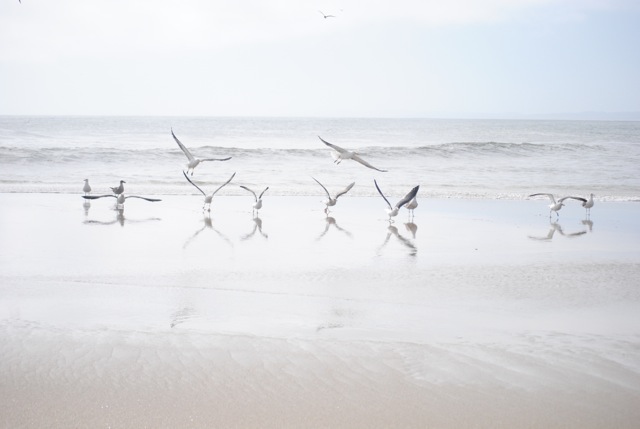
Seals
Upon reaching the coast, we drove thirty minutes north along a salt road1 to our first stop of the day, the Cape Cross Seal Reserve. Although our guide had told us that the colony was home to more than a hundred thousand seals, I was not prepared for what we saw. I expected our visit to be similar to our seal sightings at Robberg Peninsula or Diaz Point. There, we had observed, what had seemed at the time to be, an impressive number of seals from a distance.
At Cape Cross, no sooner had we stepped out of the vehicle than we were confronted with seals. It’s hard to imagine what a group of a hundred thousand seals looks like, and it’s almost as hard to explain. They were everywhere: stretched out on the ground, piled on top of each other, flopping toward the water, riding the waves. They rolled around, bleating, or hurled themselves toward the water, lurching from side to side on their fins, only to have the waves throw them back on the rocks. There were seals of all sizes and ages, and seals exhibiting a wide variety of noises, from barks to noises that sounded like songs to almost human shouts.2 The seals were noisy and smelled terrible, and we couldn’t get enough of them.

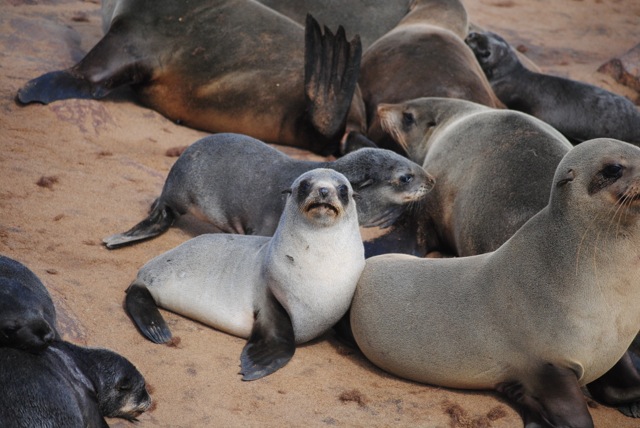
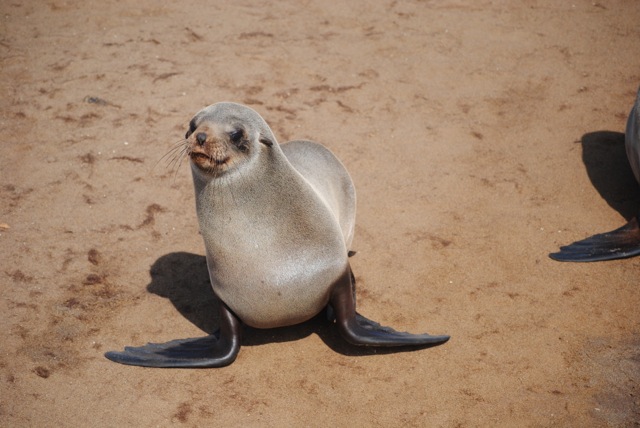
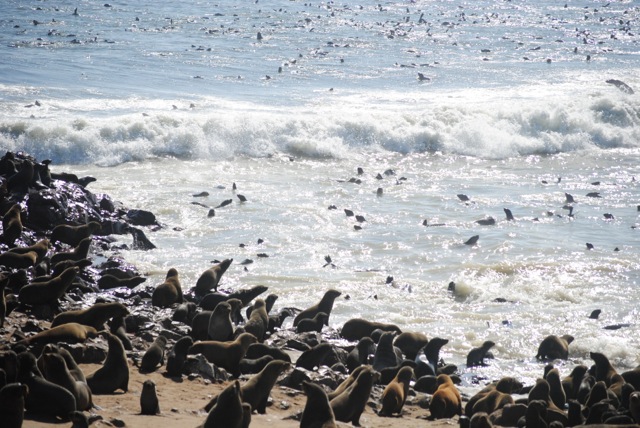
You can watch the seals on our YouTube video.
Skeletons
After our visit to the seals, we stopped to view a twenty-year-old shipwreck. The visit to the shipwreck was meant as an illustration of the terrible Skeleton Coast, but I was fascinated by the fact that, after two decades, the ship remained beached on this stretch of the Atlantic Ocean, largely intact.

Swakopmund
Finally, we arrived in Swakopmund. Like the Garden Route and (as we would later discover) Victoria Falls, much of Swakopmund’s tourism is centered around “activities.” Our first stop – before we were even permitted to check into our guesthouse3 – was an activity center. There, we were treated to an unintentionally hilarious DVD meant to entice us into signing up for sky-diving, sand-boarding, scenic flights, and the like. The video was so outdated, making copious use of garish graphics/text and cheesy transitions like fades and swirls, that we could only watch in a combination of horror and humor.
We dined as a group that evening at a restaurant called The Jetty (unsurprisingly located on a jetty), and then some of us spent the evening dancing in a local club. The next morning, while some members of our group went sky-diving, Marc and I took it easy before we headed back to Windhoek to conclude our trip around Northern Namibia.
Where We Stayed:
☆ Amanpuri Travellers Lodge. Two-and-a-half goats. It was a mediocre guesthouse that seemed popular with overland tours (judging by the number of trucks in the parking lot), and I would neither recommend it nor counsel against it. There was free wifi (only accessible in the lobby) and an okay included breakfast.
1 This portion of the coast was dominated by giant salt flats and several large salt mining operations.
2 Two nights later, over dinner in Windhoek, we would discuss this with some of our traveling companions and liken it to the Goats Yelling Like Humans video. We would then watch Goats Yelling Like Humans on one of our phones, and howl with laughter until the waitress would come over to see what the commotion was. (It would not be clear whether she found the goats amusing.)
3 This was the one night on our camping safari that we stayed in a guesthouse. It’s amazing how simply sleeping indoors can feel like a luxury after weeks of camping.

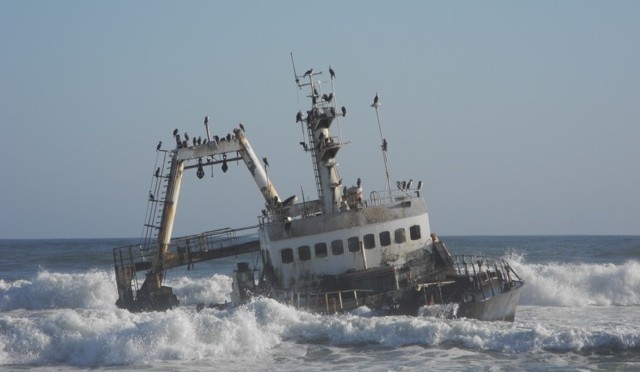

Great blog M&K!….you failed to mention the waitress who approached while we were enjoying the “goats yelling” videos, and asked what language we were speaking….WTF? Then volunteered her opinion. “It sounds like you are chewing.”